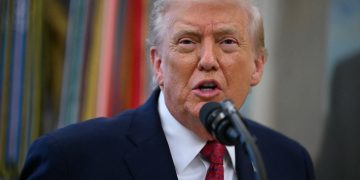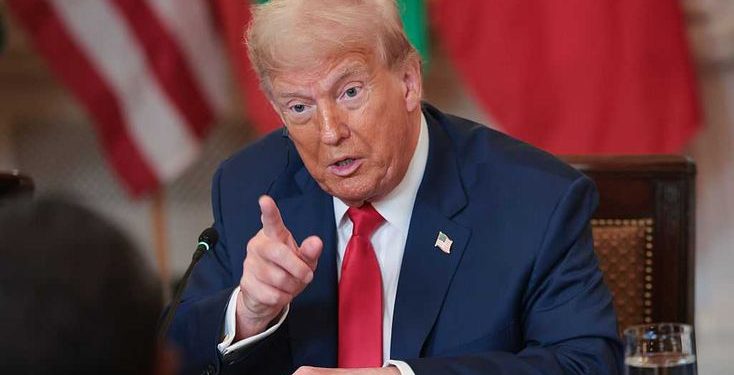U.S. President Donald Trump has finalized a major trade agreement with the European Union, settling on a 15% tariff on most EU exports to the U.S. and narrowly avoiding the imposition of a 30% tariff that was slated to take effect on August 1, 2025. The deal, announced on July 27, 2025, followed weeks of tense negotiations and represents one of the most consequential moments in U.S.–EU trade relations in recent decades.
Speaking at his Turnberry resort in Scotland, Trump called it “the biggest trade deal ever made between the United States and Europe,” while European Commission President Ursula von der Leyen cautiously described it as “the best outcome achievable under extreme pressure.” The agreement forestalls what many analysts had warned could escalate into a full-blown transatlantic trade war.
What the Deal Includes
Under the terms of the agreement, the U.S. will impose a 15% tariff ceiling on most EU goods, sparing both sides from the previously threatened 30% rate. The EU also agreed to significantly increase its purchases of U.S. liquefied natural gas (LNG), semiconductors, and agricultural products, committing to buy $750 billion in energy supplies over the next five years. In addition, EU member states pledged $600 billion in direct investment into U.S. industries, including defense manufacturing, technology, and infrastructure.
The deal also includes “zero-for-zero” tariff measures on critical industries such as aircraft components, semiconductor equipment, chemicals, pharmaceuticals, and some agricultural goods. While the pharmaceutical sector was initially contested, it was ultimately incorporated under the 15% tariff cap following last-minute talks.
Trump’s Two-Day Tariff Warning
The breakthrough came just days after Trump issued a stern warning that the U.S. was “just two days away” from imposing punitive tariffs on EU goods if Brussels failed to strike a deal. Although the “two-day” phrasing was later clarified as part of his aggressive negotiation strategy rather than a literal countdown, it intensified pressure on European leaders. Trump’s approach included what he referred to as “take-it-or-leave-it” letters, signaling his intent to act unilaterally if talks stalled.
This brinkmanship echoed Trump’s earlier statement in June, when he said he would “set unilateral tariff rates within one to two weeks,” reinforcing his willingness to reshape trade policy by executive authority. Markets reacted sharply to these threats, with European equities dropping and U.S. exporters warning of retaliatory measures from Brussels.
European Reactions and Political Fallout
European leaders greeted the deal with mixed reactions. French Prime Minister Gabriel Attal called it a “dark day for Europe,” arguing that the EU conceded too much under economic duress. German officials expressed similar concerns, warning that the agreement might set a precedent for future “negotiations by coercion.” Nevertheless, von der Leyen defended the decision, saying it “avoids an economic shock” that could have damaged the EU’s fragile recovery.
The deal still requires formal ratification by EU member states and the European Parliament, raising questions over whether all provisions will survive political scrutiny. Key industries—especially automotive manufacturing and spirits exports—remain wary of potential revisions or new U.S. demands if the EU fails to meet its investment commitments.
Markets and Economic Impact
Global financial markets responded positively to the news. European and U.S. stock futures rose modestly, while commodity markets stabilized after weeks of volatility caused by tariff uncertainty. Analysts note that while the 15% tariff is still triple the pre-Trump average of around 5%, it removes the immediate threat of a transatlantic trade war that could have disrupted $1.7 trillion in annual trade flows.
However, experts caution that the deal’s provisions may still burden European exporters and lead to higher consumer prices in the U.S. on goods such as automobiles, electronics, and specialty food products. In turn, the agreement could reshape global supply chains, particularly if the EU seeks to diversify export markets to offset U.S. tariff costs.
Why This Matters
The U.S.–EU trade deal marks a pivotal shift in global trade policy. Trump’s aggressive “tariff leverage” strategy forced the EU into an agreement under the threat of steep economic penalties, signaling a new era in U.S. trade relations. While it provides short-term stability, the agreement underscores the growing use of tariffs as a geopolitical tool and raises questions about how long-term U.S.–EU relations will evolve.
If successfully ratified and implemented, the deal will tie European energy dependence more closely to U.S. suppliers, strengthen American manufacturing, and potentially realign the global balance of trade power. But it also leaves lingering concerns over whether the threat of higher tariffs will remain a recurring feature of Trump’s second term.























































